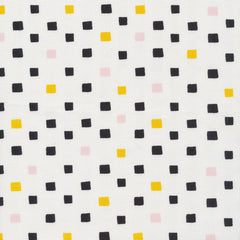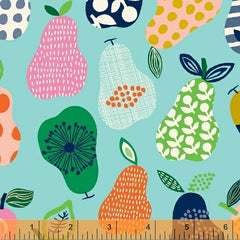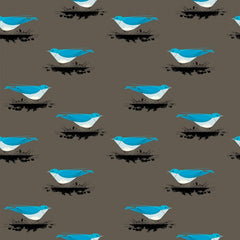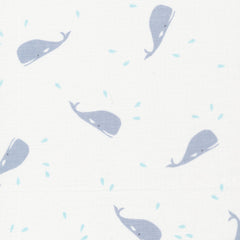Fabric Friday - What is organic cotton?
Posted by Bianca Howell on

Ever since Owl & Drum opened five years ago, we have been delighted to find customers have flocked to our wide variety of organic cotton fabrics. With great designs from such leading companies as Birch Fabrics and Cloud 9 Fabrics, organic cotton has become quite a game changer in the quilting industry.
Not only do they feature some of the most unique, exquisite designs available, but they also have some advantages that other fabrics do not. So, what exactly is organic cotton - and what makes it different from other cotton fabrics?
To be classified as organic cotton it starts from the very beginning - growing the cotton. The cotton must be grown in soil where the fertilizer is organic or natural and free of toxic pesticides.
Using organic fertilizers and pesticides helps reduce greenhouse gases and, hopefully, creates a more balanced eco-system. Also, growing organic cotton uses far less water! So, you can see how the environment, the workers and consumers can all benefit from cotton grown organically.
So, how do you know if you are using an organic cotton? For starters, if you buy fabric from industry-leaders like Birch and Cloud 9, you can be assured it is 100% organic cotton. Otherwise, you can want to look for fabrics that have a Global Organic Textile Standard (GOTS) or OE100 symbol.
To obtain these certifications, the companies that produce the fabric have to prove the whole process of production - from growing the cotton to producing the fabric - meets the organic standards. (Both Birch Fabrics and Cloud 9 Fabrics have met the requirements of the GOTS.)
Another advantage to organic cotton fabric is the types of dyes used when creating the prints. Birch Fabrics uses low-impact dyes and describes them as:
"Low-impact dyes do not contain toxic chemicals or mordants, require less rinsing and have a high absorption rate. High absorption rates and a decreased use of rinse water create less wastewater and runoff."
Do keep in mind though that low-impact dyes does not necessarily mean they are natural dyes. They just happen to be a non-toxic form of a synthetic dye.
It's important to consider using organic cotton fabric if you are making a baby quilt, clothing or nursery items. Because of the reduction of toxic chemicals in the fabric, a new mom may feel a bit of relief knowing the fabric is safe for the baby's delicate and sensitive skin.
However, don't feel like you cannot use regular cotton, too. You can - because the majority of the toxins are removed during the fabric production cycle! All in all, organic cotton fabric reduces our carbon footprint and is a win for the environment, which is never a bad thing!
Before we leave you on this beautiful Fabric Friday, take a look at the some of the fun and unique prints of organic cottons that can be found at Owl & Drum. As you can see, they are true gems in the quilt fabric market!
Charley Harper "Western Birds" by Birch Fabrics
"Squares" by Leah Duncan for Cloud 9 Fabrics
"Pears" by Carolyn Gavin for Windham Fabrics
Charley Harper's "Mountain Blue Birds" by Birch Fabrics
"Little Whales Gauze" by Tout Petit for Cloud 9 Fabrics
Share this post
- 0 comment
- Tags: fabric friday, organic cotton






